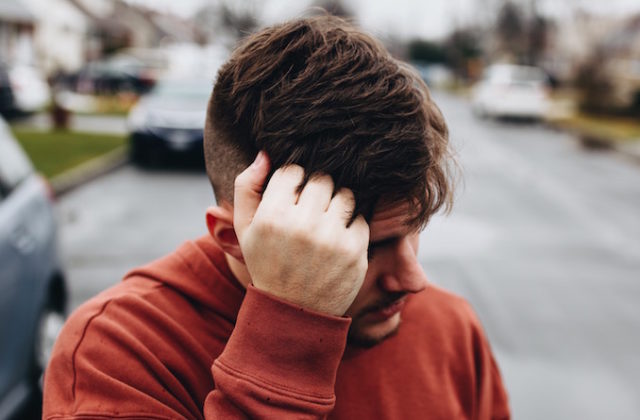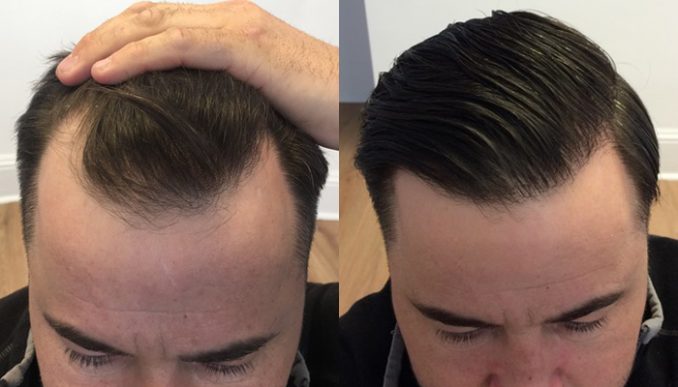There’s no denying that hair loss can be a traumatic experience for both men and women. Losing your hair can make you feel self-conscious about the way you look, which can have a knock-on effect on your career and relationships.
Thanks to technological developments, people struggling with hair loss now have a permanent solution available to them in the form of hair transplants.
These advancements in hair transplant technology paired with the high success rate of these procedures have seen more people undergoing Follicular Unit Transplants (FUT) and Follicular Unit Excision (FUE) in recent years. Even high-profile figures and celebrities are not ashamed to admit that they’ve received help for their hair loss woes.
If you were struggling with hair loss, a trip to your local hairdresser probably filled you with dread because it meant finding a cut and style that wouldn’t highlight your thinning hair or facing a hairdresser or barber who would more than likely comment on your condition.
If you have recently undergone a hair transplant and are enjoying a fuller head of hair as well as increased self-esteem, you’ve probably realised that you’re going to need to schedule an appointment at a hairdresser or barber eventually.
Before you start thinking about new hairstyles though, there are a few things you should know first.
Month one after your hair transplant
The first month after your FUE or FUT procedure will require you to give your scalp as well as your hair some additional care and attention. According to Man Cave Sydney hair transplant clinic, it’s important to use a specialised shampoo on the areas where you’re expecting new hair to grow. It’s also essential to be very gentle when washing and drying your hair – scrubbing your hair when washing or vigorously towel drying your hair is not recommended. It’s also best not to use a hair drier during the first month to protect your hair and scalp.
During the first month, your normal hair will continue to grow but the transplanted hair will only just start growing, which means it will be shorter than the rest of your hair. If you had to cut your hair, the donor areas will look more noticeable and you could damage the transplanted hair. It’s best to wait a month before you go for your first haircut.
With that being said, it’s also recommended that you schedule a follow-up visit with your hair transplant specialist before you cut your hair to make sure that it’s safe to do so. In some cases, the healing process can be slow and there will still be some redness, scabbing and swelling across the scalp. By cutting the hair when the scalp is still healing, you could aggravate the skin and cause infection.
Again your hair transplant specialist will be able to tell you whether a haircut is a good idea or not. You may also want to get your hair cut by someone who has worked with hair transplant patients before.
Choosing a hairstyle after your transplant
So, now that you are ready to get your hair cut, what style should you go for? Provided your scalp has healed and the risks of damaging the transplanted hair is minimal, you’re free to get any style you want.
Many men who cut their hair for the first time after a transplant will cut their hair very short or shave it in order to make the length of their hair more equal. Another option is to choose a style that adds more volume in order to cover up the donor hair that’s still growing and shorter than the rest of your hair.
Your first hairstyle is all about personal preference and this is a great time to choose a style that will make you feel confident and celebrate the fact that you can look forward to thicker hair.
Styling your hair after a transplant
Along with getting your first haircut, you probably need to start thinking about styling your hair again too. While styling products, dyes and heat treatments may provide you with the style you want, it’s best to avoid these types of treatments and products for at least a month.
It’s also important to remember that the transplant area may still be numb, which means you could risk burning or damaging your new hair follicles as well as your scalp because you can’t feel anything. Your new hair follicles are also going to be sensitive at first, so using chemicals on them could create adverse effects.
If you desperately want to colour your hair, again, rather wait at least a month and speak to your hair transplant specialist before you go ahead with treatment. Even if you’ve dyed your hair before, always do a patch test to see how your new hair follicles will react.


